Supplementary Information: Combining HIC, SEC, and IEX with Fluorescence Polarization for Drug Target Discovery
LCGC Europe
This information is supplementary to the article “Combining HIC. SEC, and IEX with Fluorescence Polarization for Drug Target Discovery” that was published in the May 2017 issue of LCGC Europe.
Supplementary Figure 1: (A) Competition between active analogue OD270 and inactive analogue OD198 for 161-FLU binding in TNKS2a. (B) Fluorescence polarization competition binding between TNKS2a and 161-FLU with active analogue OD270 (A), active analogue OD139 (C), and inactive analogue OD198 (D). The assay was performed in a 96-well plate with 200 μL 10 nM 161-FLU added to each well, and 20 μL TNKS2a dissolved in buffer so that the protein:drug ratio was 75. 4 μL competitor in DMSO was added to each well in concentrations from -3 log(competitor:161-FLU) 3 in 10-fold dilutions.
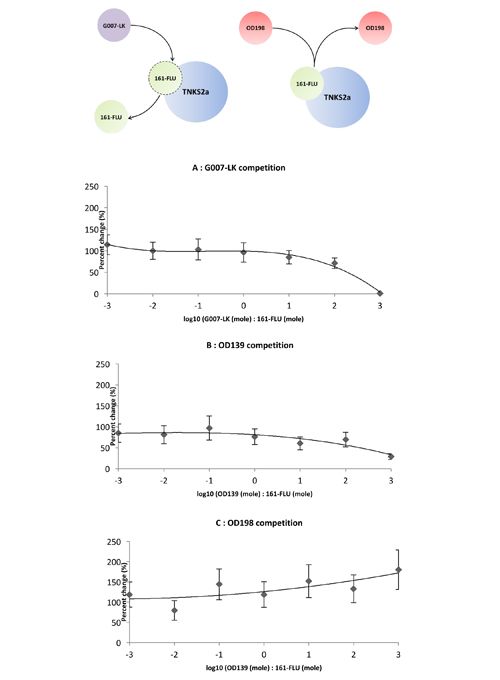
Supplementary Figure 2: LC salt influence on FP signal in a 384-well plate with 30 μL 1 μg/mL XAV-FLU and 10 μL of each solvent added. The SEC solvents contained 0.05 mM NaH
2
PO
4
and various amounts of NaCl (max concentration 0.3 M) in the concentration ranges used for LC and pH adjusted to 7. The IEX solvents contained 0.02 M MES and various amounts of NaCl (max concentration 0.8 M), pH adjusted to 6. The HIC solvents contained 0.05 M NaH
2
PO
4
and various amounts of (NH
4
)
2
SO
4
(maximum concentration 2 M) pH adjusted to 7.
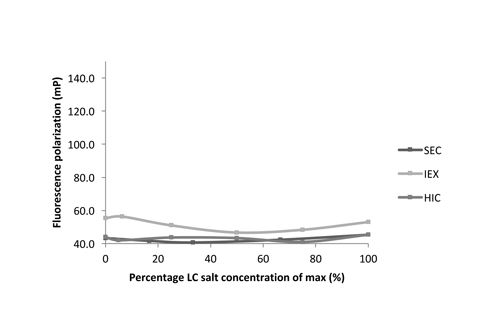
Supplementary Figure 3: nanoLC–ESI-MS chromatogram of trypsin-digested digested fractions from IEX, HIC, and SEC. A 4 μL sample was injected and separated on a temperature regulated (80 °C) silica-based C
18
monolithic column. Separation was done with linear gradient elution from 5% to 90% acetonitrile containing 0.1% formic acid (FA) (
v/v
) in 30 min (for samples A–C) and 5% to 45% acetonitrile containing 0.1% (
v/v
) FA in 25 min for sample D. A wash-out step for 5 min at 90% acetonitrile was applied in all of the separations. The flow rate was set to 2 μL/min. The MS used was a LTQ Orbitrap scanning from 300 to 1700
m/z
selecting top 10 peaks for MS/MS fragmentation. Venn diagram showing TNKS2a as common protein after LC–MS/MS analysis of TP fractions from SEC, HIC, and IEX that showed binding with XAV-FLU.
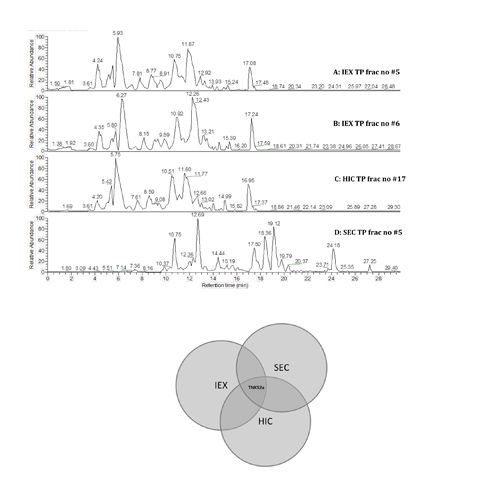
Supplementary Figure 4: IEX–UV chromatogram of a standard protein separation with different gradient lengths. Protein sample was separated at 1 mL/min using gradient elution on a 4.6 mm x 200 mm mixed-bed ion-exchange column. The column was temperature regulated at 20 °C. MP A contained 20 mM MES at pH 6 and 20 mM MES and 0.8 M NaCl at pH 6. 100 μL protein standard sample containing (1) carbonic anhydrase, (2) hemoglobin, (3) conalbumin, and (4) lysozyme was injected. The gradient started at 100% A for 5 min and then a linear increase to 52.5% A with lengths from 20 to 180 min, and a final wash-out step at 0% A for 10 min. Equilibration was done for 25 min prior to the next injection at 100% A.
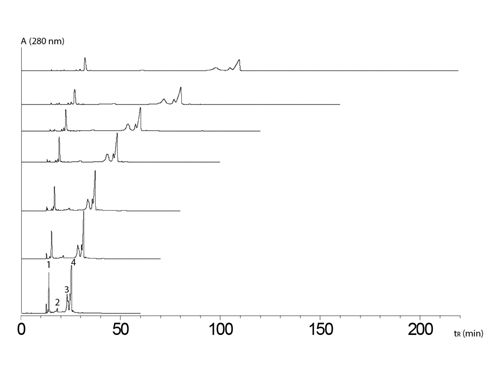
Supplementary Figure 5: HIC–UV chromatogram of protein mixture containing (1) cytochrome C, (2) myoglobin, (3) ribonuclease B, and (4) chymotrypsinogen separated on a 4.6 x 200 mm Propac HIC-10 column, which was temperature regulated at 20 °C. The flow rate was 1 mL/min with 100 μL injected. Proteins were separated using gradient elution with 100% MP for 5 min then a linear decrease to 0% MP A in (A) 20, (B) 40, (C) 80, (D) 120, (E) 240 min with a final hold for 5 min at 0% MP A. Equilibration was performed for 30 min between runs at 100% MP A. MP A contained 2 M ammonium sulfate + 0.05 M sodium phosphate at pH 7 and MP B contained 0.05 M sodium phosphate at pH 7.

Supplementary Figure 6: SEC–UV chromatogram of protein standards separated at 0.35 mL/min using isocratic elution on a 4.6 mm x 30 cm size-exclusion column. Injection volume was 100 μL. The column was temperature regulated at 20 °C and mobile phase consisted of 0.05 M sodium phosphate and 0.3 M sodium chloride in water at pH 7. Autosampler temperature was 4 °C.
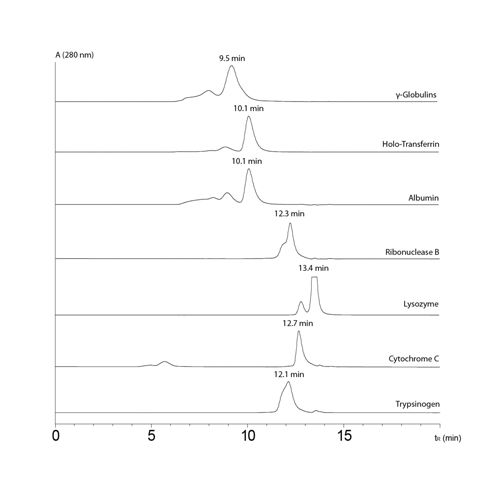
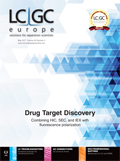
Characterizing Polyamides Using Reversed-Phase Liquid Chromatography
May 5th 2025Polyamides can be difficult to characterize, despite their use in various aspects of everyday life. Vrije Universiteit Amsterdam researchers hoped to address this using a reversed-phase liquid chromatography (RPLC)-based approach.
Characterizing Plant Polysaccharides Using Size-Exclusion Chromatography
April 4th 2025With green chemistry becoming more standardized, Leena Pitkänen of Aalto University analyzed how useful size-exclusion chromatography (SEC) and asymmetric flow field-flow fractionation (AF4) could be in characterizing plant polysaccharides.
Rethinking Chromatography Workflows with AI and Machine Learning
April 1st 2025Interest in applying artificial intelligence (AI) and machine learning (ML) to chromatography is greater than ever. In this article, we discuss data-related barriers to accomplishing this goal and how rethinking chromatography data systems can overcome them.
Influence of Concentration in Conventional GPC/SEC and Advanced Detection GPC/SEC
March 21st 2025Sample concentration is a parameter that can influence the quality of gel permeation chromatography/size-exclusion chromatography (GPC/SEC) separations and the obtained results. Understanding this influence can help to support the development of reliable GPC/SEC methods.

.png&w=3840&q=75)

.png&w=3840&q=75)



.png&w=3840&q=75)



.png&w=3840&q=75)













